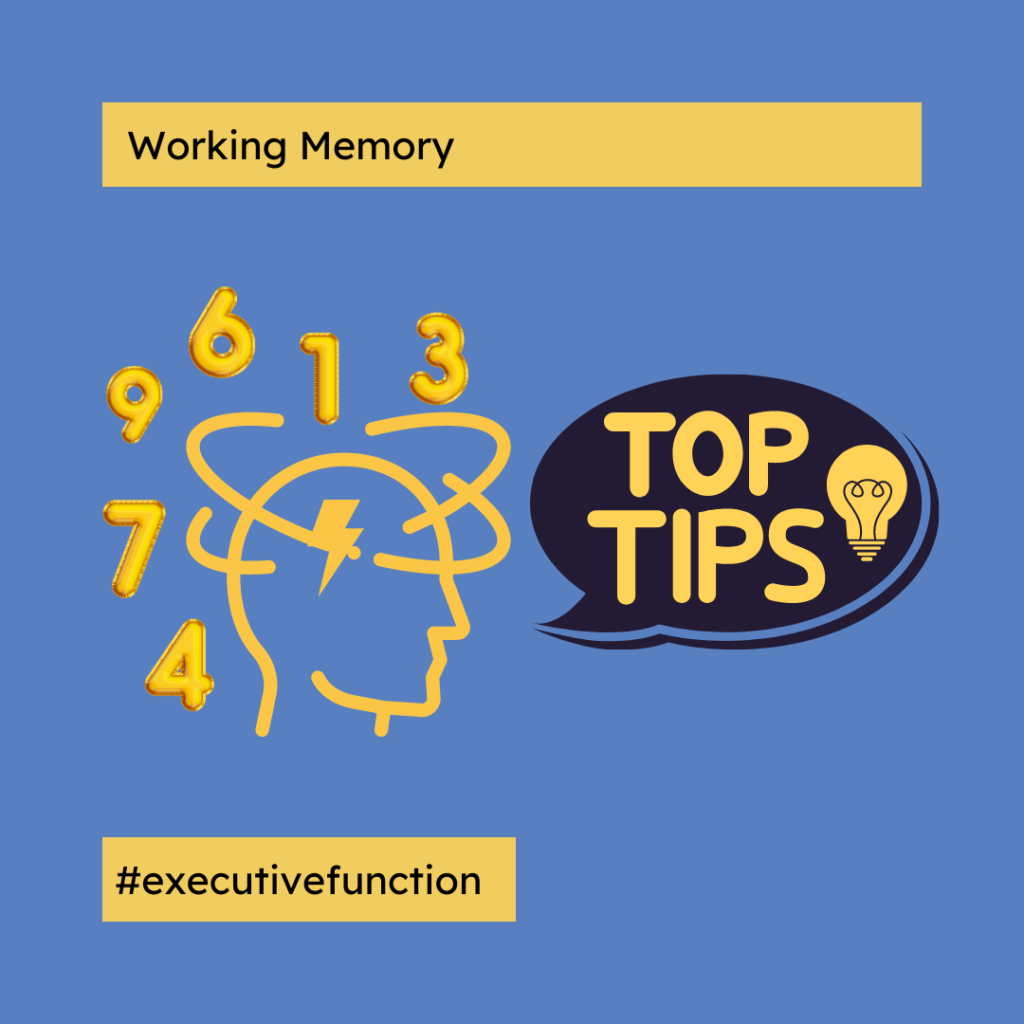Introduction
Executive Functioning is a term that describes how our brains self-regulate and manage the various tasks we need to accomplish in our daily lives. Among the eleven main Executive Functions, Working Memory plays a significant role, particularly for Neurodiverse individuals with conditions such as Dyslexia or ADHD. In this blog, I will discuss the impact of working memory on real-life situations and offer strategies to strengthen and support it for both children and adults.

Understanding Working Memory
Working Memory is the ability to hold information in your mind while performing complex tasks. For example, if you need to remember a phone number or a website address while looking for a piece of paper and a pen, you’re using your working memory. In school-aged children, working memory is crucial for tasks like mental maths, which is heavily relied upon in primary education.
Neurodiverse individuals often struggle with working memory, leading to frustration and low self-esteem, particularly compared to their peers. This is the case for me and has caused me so many challenges over the years as up until recently; I was unsupported and unaware of why I found certain things so much harder than my peers.
Knowing that someone will find it harder than average to listen and to hold onto information and then manipulate numbers or words or ideas in their heads, there are many ways to mitigate this issue, and none of them are particularly complicated. Some strategies are done by adding in extra senses to support poor Working Memory and bring down the Cognitive Load or by giving them extra time to think. As the brain can learn and change, what we call Neuroplasticity, we can add strategies that help improve Working Memory too.
Fortunately, working memory can be strengthened through practice and targeted strategies.
Strategies for Strengthening Working Memory
Strategies for Strengthening Working Memory:
- Lessen the Cognitive Load: Provide information in a written format or use multiple senses to support working memory. Avoid relying solely on auditory input when it’s not necessary.
- Allow Time for Notes: Encourage individuals to take notes or make jottings as they work through tasks, providing a visual reference to support their working memory.
- Provide Extra Time: Remove timed pressure, giving individuals more time to complete tasks without becoming flustered.
- Present Information in Small Chunks: Offer spoken information in smaller pieces and reinforce essential details in writing.
- Encourage Active Listening Skills: Teach individuals to paraphrase what they’ve heard to confirm their understanding, e.g., ‘So what you’ve asked me to do is… is that right?’
- Use Brain Training Exercises: For children, introduce low-pressure exercises or games that improve basic working memory skills over time.
Additional Tips for Those with Working Memory Issues:
- Utilise Digital Recorders: Record information and use speech-to-text software instead of taking notes, allowing for better focus on listening and comprehension.
- Minimise Multitasking: Complete one short task before moving on to the next to prevent overwhelming the working memory.
- Practice Relaxation Techniques: Employ relaxation methods to maximise mental stamina and support working memory and attention.
- Engage in Daily Mindfulness: Mindfulness practice can help improve recall and regulate sensory input by tuning out distractions.
Organisations like Connections in Mind specialise in Executive Functions and offer support for individuals looking to improve their working memory and other Executive Functions. By implementing these strategies, Neurodiverse children and adults can strengthen their working memory and navigate the world with more confidence and ease.
For more information on Executive Functions and Neurodiversity, visit our previous blog posts
#executivefunction # Neurodiversity #workingmemory #mathsanxiety
